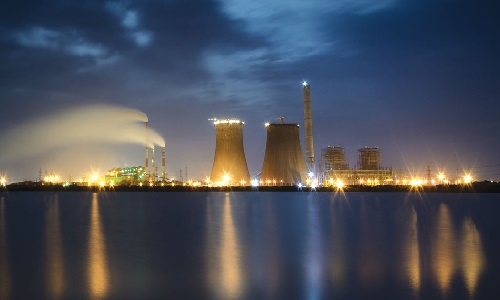Koradi, Chandrapur, Nashik TPPs in State using highest fresh water for power generation: Study
| Date :01-Jun-2023 |

By Kaushik Bhattacharya
Koradi, Chandrapur and Nashik Thermal Power Plants (TPPs) top Maharashtra in utilising fresh water for power generation, revealed a study conducted by Centre for Science and Environment (CSE), a New Delhi-based public interest research and advocacy organisation. According to the CSE study, these three power plants also top the country in non-complying coal-based thermal power plants standards as notified by the Ministry of Environment, Forest and Climate Change (MoEF&CC) in December 2015. The findings of the study named ‘Water - Insufficient Power - Implementing Water Norms and Zero Discharge in India’s Coal-Power Fleet’ were released by the CSE in 2021. In its notification, MoEF&CC also mentioned that TPPs installed before 2017 were required to meet a norm of 3.5 cubic metre per megawatt hour (m3/MWh) while those TPPs installed after January 1, 2017 had to meet 2.5 m3/MWh along with zero liquid discharge.
As per the study, “Non-complying plants in Maharashtra include older units commissioned before 1997, including Maharashtra State Electricity Generation Company Limited’s (MahaGenco’s) Koradi, Chandrapur and Nashik TPP.”
In Maharashtra, the CSE conducted the survey at 22.59 GW capacity TPPs including Koradi, Nashik, Paras, Chandrapur, and NTPC Solapur. Among these, 9.6 GW capacity plants are most non-complying to MoEF&CC notification, highest in India. Though the study was conducted in 2021, the water consumption and the status of compliance remain the same as the requirement of water continued to increase day by day for power generation.
As per the CSE report, about 48 per cent of existing coal-power fleet is located in water-scarce regions such as Nagpur and Chandrapur in Maharashtra; Raichur in Karnataka; Korba in Chhattisgarh; Barmer and Baran in Rajasthan; Khammam and Kothagudem in Telangana and Cuddalore in Tamil Nadu which are already facing the brunt of water scarcity.
Power plants in water-scarce areas had to often resort to shutdown or curtail production due to reduced water availability or non-availability of water. With acute water shortage and declining availability of water, such a scenario is expected to become more frequent in the future, the study stated. The crisis is especially aggravated during summers when there is additional demand for power due to increased cooling needs, increasing pressure on coal-based power plants. Monsoon failure and drought also add to the stress, it stated.
The study also stated, “The Central Electricity Authority (CEA) monitors the implementation of critical emission control technologies and updates the data in the public domain, quarterly. However, there is no information available in public domain, no transparency is maintained related to water consumption data and compliance status of each plant.” As per the MoEFCC notification of 2015, all freshwater-based once-through plants were required to install cooling tower and achieve the limit of 3.5 m3 per MWh by 2017. In June–July 2019, however, the Central Pollution Control Board (CPCB) issued directions to these freshwater based once-through plants (about 17 GW capacity) to install cooling towers and comply with the standards by June 30, 2022. The study also revealed that about 20 out of 36 TPPs identified as non-complying to cooling tower-based plants in the surveyed capacity had high Specific Water Consumption (SWC) greater than 4 m3/MWh.
However, in Maharashtra, MahaGenco’s Koradi-based TPP, which has the total generation capacity of 2,400 MW, had SWC greater than 4 m3/MWh, the study claimed. Most of the newer units have come up in Maharashtra, Chhattisgarh and Madhya Pradesh. With regard to the Zero Liquid Discharge (ZLD) norm, there is no information on whether these newer plants follow the zero liquid discharge condition laid down in the 2015 water norms. Even Pollution Control Boards are not keeping a track on the ZLD implementation norm as no on-ground monitoring and inspection is carried out to check compliance with respect to zero discharge, it stated.